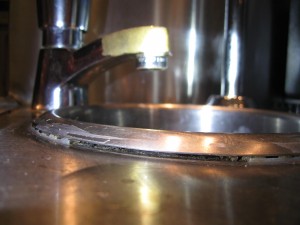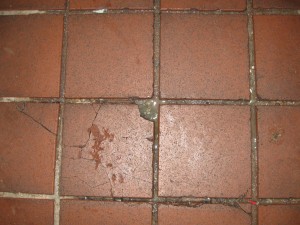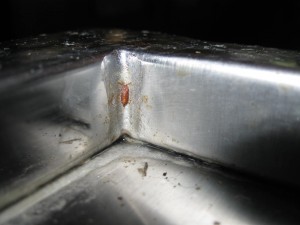A common pest in homes is the red-eyed fruit fly: Drosophila melanogaster. Famous for use in genetic studies, and infamous for emerging from store-bought bananas, management of this fly rarely requires more than discarding infested items outside of the home.

Management of this fly’s cousin, the dark-eyed fruit fly (Drosophila repleta), also requires elimination of breeding habitat. However, finding and addressing that habitat can be more difficult. This is because dark-eyed fruit flies develop in wet, decaying organic material that may be out of sight. They are common pests in bars, restaurants, and some coffee shops where they breed under equipment, near drains, sinks, and beverage taps. In these accounts, customers may observe flies near food, drinks or when they rest on walls. Flies may defecate (poop) on walls and leave black fecal spots on otherwise light-colored surfaces, affecting your client’s brand.
Identify the Problem.
When dealing with dark-eyed fruit flies, the first and most important step is a thorough inspection to identify breeding locations. Focus your inspection on places that remain wet, and where food spillage might be present. In addition to sinks and drains, consider moisture from condensation on refrigerators, ice machines and pipes.


Address the Problem.
Whether structural or sanitation issues contribute to fly problems, the solution is to remove breeding habitat. Keeping areas dry and free of food spillage will avoid future problems with fly breeding. Some questions to consider: Is there tile grout missing, allowing water and crumbs to accumulate? Is the floor angled or are depressions present that collect water? Does food fall behind or under equipment and is not regularly cleaned? Are floors power-washed at night, lodging food and water in areas that are out of sight or stay wet throughout the day? Are there cracks and crevices near the sink that do not have a sealant?
Quick Fix.

Addressing structural or sanitation issues are a long-term solution that will prevent fly breeding. But what can be done in the immediate future to address customer concerns? Dark-eyed fruit flies are attracted to insect light traps, which can be installed in kitchen areas. Traps may also be placed out at night when all other lights are off to harvest active flies. In addition, fans can be used to dry out breeding areas or to keep flies out of customer spaces.
What NOT To Do.
Bug bombs and general pesticide applications do nothing to address the breeding fly population, and therefore do nothing to prevent future problems. Similarly, pest-strips containing dichlorvos are sometimes used illegally for management of fruit flies in restaurants. According to the label, these products are intended for use in confined spaces where people are present for no more than four hours at a time. They are not to be used in areas where food is prepared, stored or consumed. For more information on pest-strips, see our previous post, Pest-Strips: A Kitchen No-No!